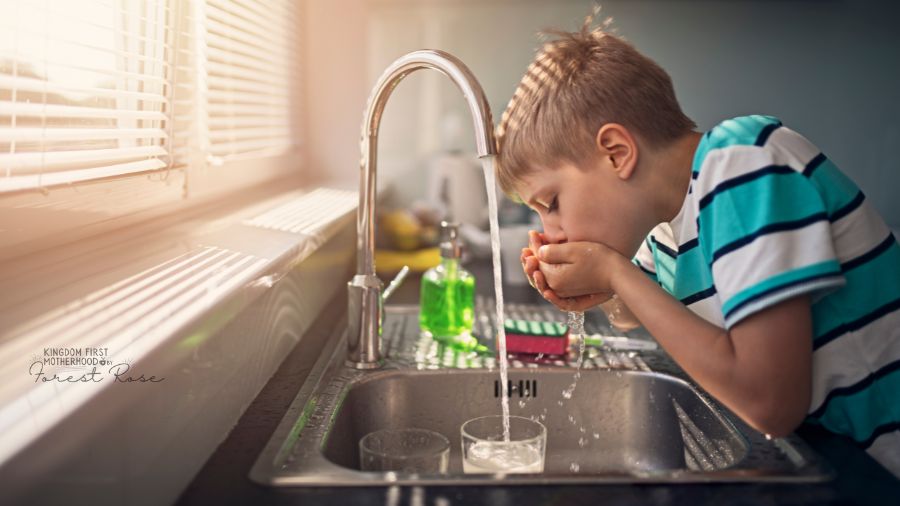Water is arguably the single most important thing that we consume as human beings, and it is especially crucial for growing children. Unfortunately, in its natural state on this planet, water is generally unsafe to drink, as it can contain trace amounts of effectively any substance on the planet, from lead to microbial threats to fecal waste, and so on. For much of human history, people drank low-alcohol content beer or wine rather than drinking water, because of the dangers associated with it. Fortunately, in the United States, we have fairly good quality drinking water; it is not perfect, however, and water contaminants can cost lives or loss of health if not treated properly.

Understanding Water Contaminants
Water has a tendency to pick up contaminants because water is a highly potent solvent. Known as the “universal solvent,” water is capable of dissolving more substances on the planet than any other. Water is one of the basic building blocks of our bodies and the physical world in general–it merges and melds with other things by its nature. Many of the things that water picks up are beneficial for us, such as calcium and magnesium, but other things, such as lead, VOCs, or PFAS are not, and we want to remove them.
It is helpful to consider broad categories of contaminants, rather than trying to list all of them, which would be an impossible task. One of the most common problems in water is sediment: dirt, dust, grit, sand, rust, and other particulate matter can get into the water supply through pipe breakages, improper maintenance, and as age takes its toll on the plumbing.
Mineral content in water can also be completely dissolved, or “in solution.” If you have hard water in your home, then you know the effects it can have–limescale forms on faucets, sinks, and countertops and can cause problems for your plumbing and water heater over time. Many people choose to install a water softener to combat this particular problem; experts at AllFilters confirm that a softener is one of the best whole-home solutions for dealing with high water hardness.
In most city water, you will find chlorine and/or chloramines in the water–these are potent disinfectants used to kill microbial threats in water. Even though the trace amounts of chlorine that remain in drinking water by the time it gets to your tap are quite small, the chemical can still impart a negative taste to the water.
Assessment of Water Safety Competencies
Water is only as safe as the delivery system that brings it to us. Many older municipal systems still have lead pipes in use, which are generally safe, but sometimes leaching can occur, so it pays to know what sort of piping is installed, especially in older buildings. If you are looking to build a custom filtration system for your own home, or if you are concerned about the quality of water at your child’s school, it is good to start by assessing the quality of the water you are drinking. Laboratory tests on sample water can be had for around a hundred dollars. When it comes to water quality, knowledge of current conditions is paramount. Water is always flowing and changing things around it, so the quality of your water can fluctuate.
Essential Tips to Ensure Clean Water in Your Home
If you are on city water in the United States, then chances are that your tap water is decent. However, nearly every homeowner can benefit from adding some additional water treatment to their homestead. A water softener is a great option for whole-house treatment, and pairs perfectly with an undersink reverse osmosis system. RO systems filter water down to 0.0001 microns, and are able to remove the vast majority of dissolved solids in water. Another reason that these two make a natural pair is that water softeners add trace amounts of salt to the water, which the RO is great at removing.
Ensuring Safe Water at School
Unless you have some specific reason to fear the water quality at your children’s school, kids are probably safe drinking from school water fountains. For extra precaution, you could send them with water bottles; some schools may offer water bottles as well, if there is a potability problem with the school’s water. As always,
Emergency Preparedness
Water is one of the most vital resources in the world, and we tend to take it for granted, until something goes wrong. In an emergency, finding clean, potable water is one of the first priorities, so it pays to plan ahead, and store water somewhere on your property. Plan to have enough water to last your family a week, if possible.
Water is a curious substance–a bringer of both life and death, a source of creation and destruction at the same time. It is the basic ingredient of our physical bodies, and it matters what sort of water we drink. For young children especially, clean potable water is a necessity; take the time to prepare for the unexpected, install a energy efficient filtration system in your home if your water is not up to par, and stay attuned to the ongoing quality of your water
For more homeschooling inspiration, tips and encouragement, make sure to follow KFH on Facebook, Pinterest, Instagram and Twitter, and subscribe to our Newsletter for some FREE GOODIES!
Forest Rose is a God Loving, Blessed Wife, & Mama to 3 girls. She’s passionate about lifting moms out of the trenches that are discouraged, overwhelmed, or feeling alone or isolated. Her hope is to point them to Christ and equip them to rise up with a newfound hope and joy within, that He alone can provide. Besides blogging, she also loves to create printables!



Leave a Reply